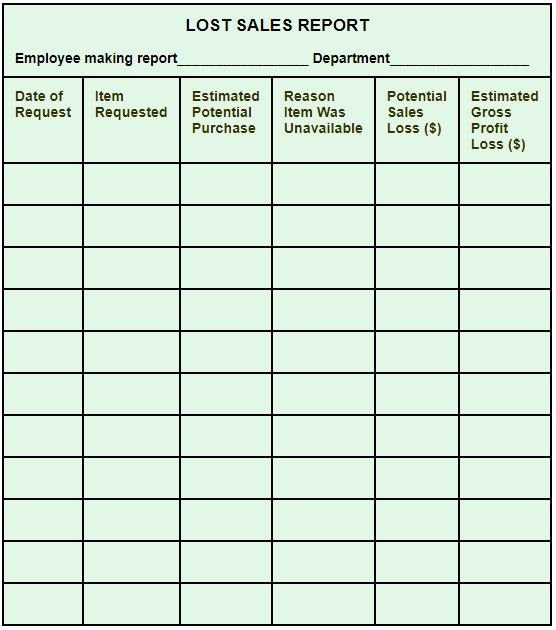Lost sales are among the most important financial data a company needs to track. When you lose sales, the dollar amount doesn’t just have a one-time effect on your bottom line. The situation can result in unhappy, dissatisfied customers who take their business somewhere else. It’s like money down the drain.
Tracking Lost Sales
There are three types of lost sales:
- Customer requests for items you don’t stock.
- Requests for items you have but can’t deliver on time.
- Requests for products that are temporarily out of stock.
All too often, out-of-stock items are in stock but inventory reports erroneously report that there are none available.
Eliminating Guesswork
Without closely tracking lost sales — and the reasons behind them — your company has no way of knowing what your customers would buy from you if you had it to sell. Rather than factual information, you have guesses on what items to manufacture or stock.
When there are multiple customer requests for products or services you can’t fulfill, you need to act quickly. Your customers are urging you to sell them more, so capture this valuable information.
The responsibility for tracking should fall to all departments. When you start to think of a lost sale as a dissatisfied and potentially lost customer, you’ll see that the need to document them becomes a company-wide issue.
Below is an example of a “Lost Sales Report” that was designed for a building supplies manufacturer. After using the report and carefully analyzing the data, the company developed a plan that better met customers’ needs. Does your organization generate a similar report to help track reasons for lost sales?
Meeting Customer Needs
Don’t force your customers to do business with competitors because you don’t provide what they want. Customers are loyal until they have a reason not to be. Contact your CPA for help implementing a lost sales tracking system and improving your customer satisfaction and retention.

Copyright © 2020
